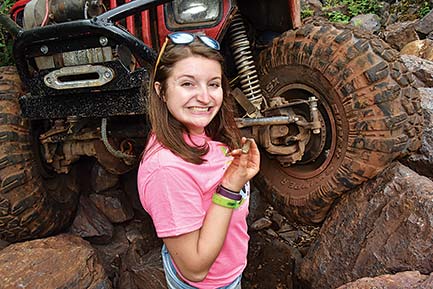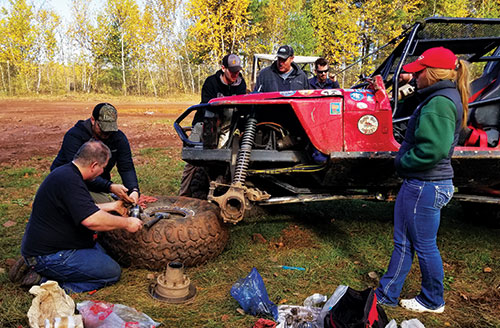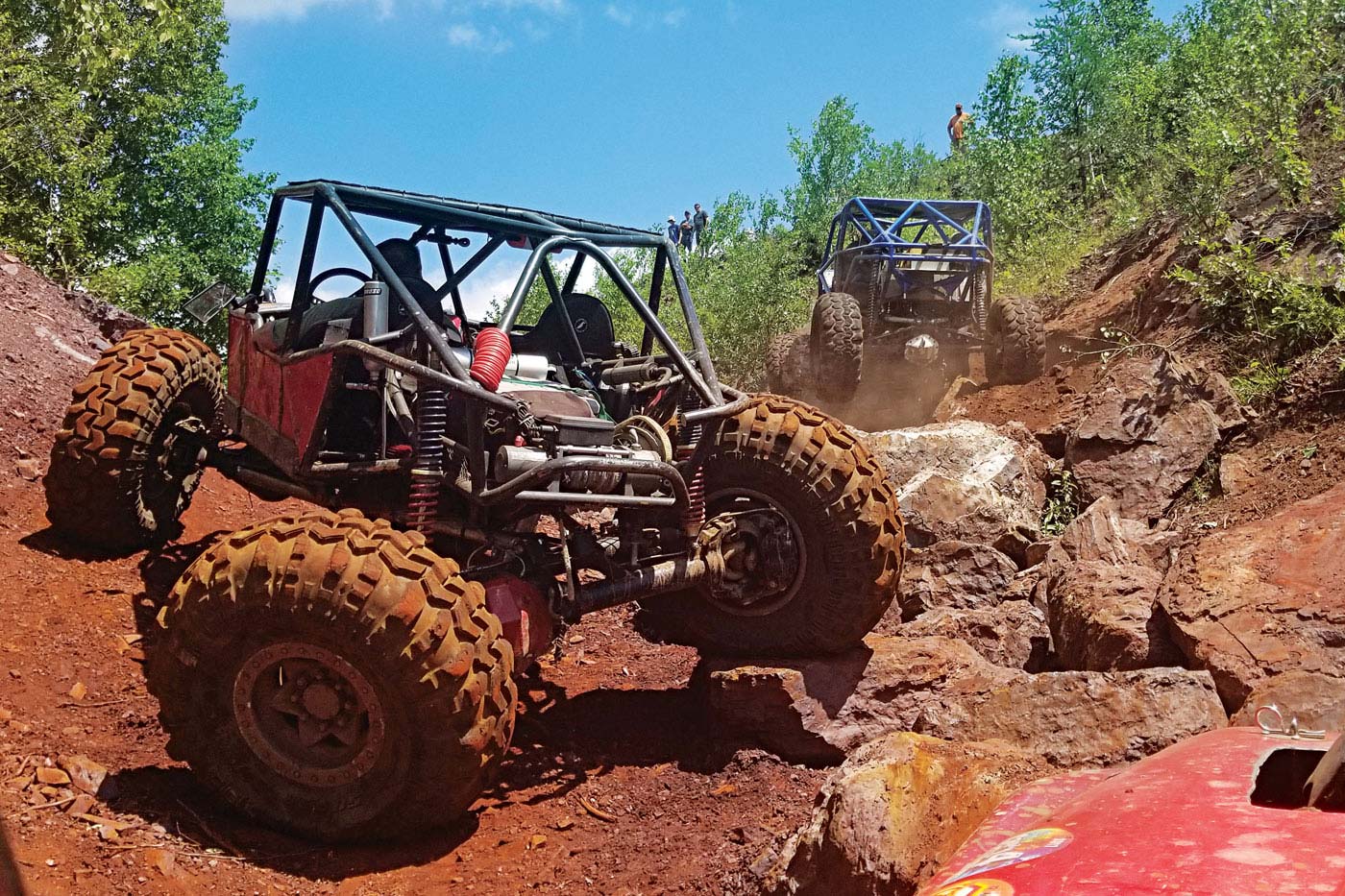Spring is in the Air
Get prepared for the 2021 4WD season
It’s time to switch gears from Winter to Summer wheeling!
If you’re new to the sport of wheeling, it can be difficult to decipher which tools and supplies should be taken out or added into your vehicle as the seasons change.
It’s likely that some of your summer gear got booted out of your vehicle to make room for straps, shovels, or other things to prepare for the winter. Now that we’re switching gears back to warmer weather, many of us find ourselves wondering how you accumulated all this stuff and if it all really needs to go back in…So the question is, what do you really need?
Tools For the Trail » Morgan broke a heim joint on her buggy while leading the group through One Percent at the Gilbert IROHVRA during the 2019 Crawl 4 the Cure event. They quickly replaced it and were back on the trail.
» Morgan broke a heim joint on her buggy while leading the group through One Percent at the Gilbert IROHVRA during the 2019 Crawl 4 the Cure event. They quickly replaced it and were back on the trail.
Tools will vary widely depending on how much experience you have, how comfortable you are diagnosing and repairing your own vehicle, how long of a trip you’re planning, the terrain and obstacles you plan to encounter, and so on.
The tools and supplies an overlander carries will look very different than the tools carried in a fully built buggy, so take this advice with a grain of salt and go with what feels right for you and your vehicle.
Depending on your vehicle, there may be tools you carry for a specific purpose, or that you carry because they fit a wide range of things. To begin, I carry a generic socket set, which has the most common american and metric sizes, and a ratchet that fits those sockets. I also carry a variety of screwdrivers, pliers, allen wrenches, some air tools, a few spare air and hydraulic fittings, a handful of nuts and bolts in various sizes, and various other odds and ends. I also always carry extra fluids, such as oil and power steering fluid. As far as extra parts go, what you carry is up to you. I try to carry parts with me that I have the tools and the skills to replace on the trail.
As far as extra parts go, what you carry is up to you. I try to carry parts with me that I have the tools and skills to replace on the trail.
You can never predict everything, so some of the most important things I carry are: WD-40, a pocket knife, duct tape, bungee cords, brake cleaner, and rags. Creativity can be the determining factor in getting your vehicle off the trail, so having those things will set you up for success.
Recovery Gear  » Morgan’s buggy in the process of being repaired at Rock Rash 2017 after breaking an axle shaft in the Dumb and Dumber trail at the Gilbert IROHVRA.
» Morgan’s buggy in the process of being repaired at Rock Rash 2017 after breaking an axle shaft in the Dumb and Dumber trail at the Gilbert IROHVRA.
For recovery gear, what you carry may, again, depend on your vehicle. I have a winch on my buggy, as do many of the people I wheel
with, so I adapt my equipment around that.
I carry one long strap, a tree saver, a few soft shackles, and a fid tool to use in repairing broken winch lines. If you have a synthetic winch line, this little tool will be the best $45 you’ll ever spend and can save you a lot of time and frustration. I have one from Factor 55, but any fid will work just as well.
EveryDay Items
Beyond tools, there are other everyday items that I make sure to pack before embarking on the trail.
This includes, but certainly is not limited to: toilet paper, wet wipes, bug spray, sunscreen, plenty of water, a filling lunch, and lots of snacks. This list will grow if you have kids, dogs, or other things to take into consideration.
Another way to ensure you’re prepared is to quickly look over your vehicle before and after each wheeling trip. Checking your fluid levels and watching for leaks, ensuring moving parts like u-joints and heim joints are well-lubricated, and so forth. There are also plenty of videos and checklists on YouTube that can help you to form a comprehensive plan for inspecting your vehicle. This is one easy way to ensure that you’re in tune with your vehicle and can help you be more prepared.
Weather Watch
One last thing: be prepared for the weather! I live in Minnesota and primarily recreate in the Midwest where it can be common to experience all four seasons in one day. When preparing for a trip, I always pay attention to the forecast so I know how I should dress or if I should pack my rain gear. Staying aware of the weather, especially in the summer, can make or break your weekend; no one wants to end a great weekend with a trip to the hospital for heat stroke. Learn as You Go Of course, this is not an exhaustive trip preparation list. You could fill an entire vehicle with all the tools and supplies you might need on the trail. It’s important to think about what you will get the most use out of, especially in the context of the weather, your destination, and what’s most likely to break. Most of us are making it up as we go and learning through the process, so don’t worry too much and have fun along the way!




